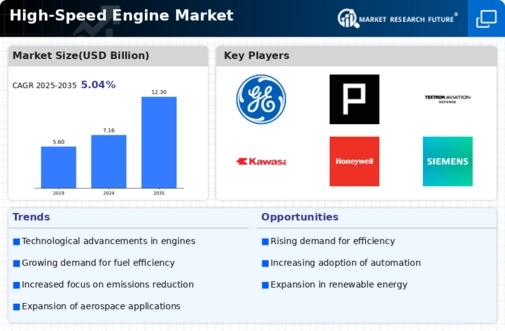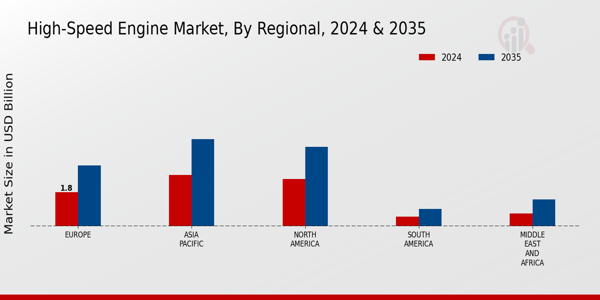The High-Speed Engine Market is characterized by a dynamic competitive landscape driven by technological advancements and increasing demand for efficient and high-performance engines across various sectors, particularly aerospace and high-speed transportation.
Key players in this market are continually innovating to meet the exacting standards of performance, fuel efficiency, and environmental regulations while also addressing the growing expectations of customers for advanced engine capabilities.
The rivalry among established firms is intense, marked by strategic partnerships, investment in research and development, and a focus on expanding global reach through mergers and acquisitions.
As the industry evolves, participants are leveraging their expertise and technological prowess to carve out competitive advantages, making the high-speed engine market a focal point for many leading manufacturers worldwide.
General Electric is a significant player within the High-Speed Engine Market, known for its robust portfolio that encompasses advanced high-speed engines used primarily in military and commercial aerospace applications.
The company boasts a strong market presence, leveraging its extensive research and development capabilities to innovate continuously. General Electric's strengths lie in its ability to integrate cutting-edge technology into its engine designs, which focus on reliability, performance, and fuel efficiency.
The company has established a formidable reputation for delivering high-quality products that meet or exceed global standards, thereby attracting a loyal customer base.
Its experience and resources enable General Electric to effectively navigate the competitive landscape, making it a formidable contender in the high-speed engine sector.
Pratt & Whitney is a global leader in the high-speed engine industry, renowned for its cutting-edge aircraft propulsion systems.
The company’s geared turbofan (GTF) engine is a breakthrough in fuel efficiency and noise reduction, powering next-generation commercial jets. It is also a key supplier of military engines for the F-35 and other advanced fighter aircraft.
With continuous investment in sustainable aviation technologies and digital engine health monitoring, Pratt & Whitney remains at the forefront of innovation in aerospace propulsion.























Leave a Comment